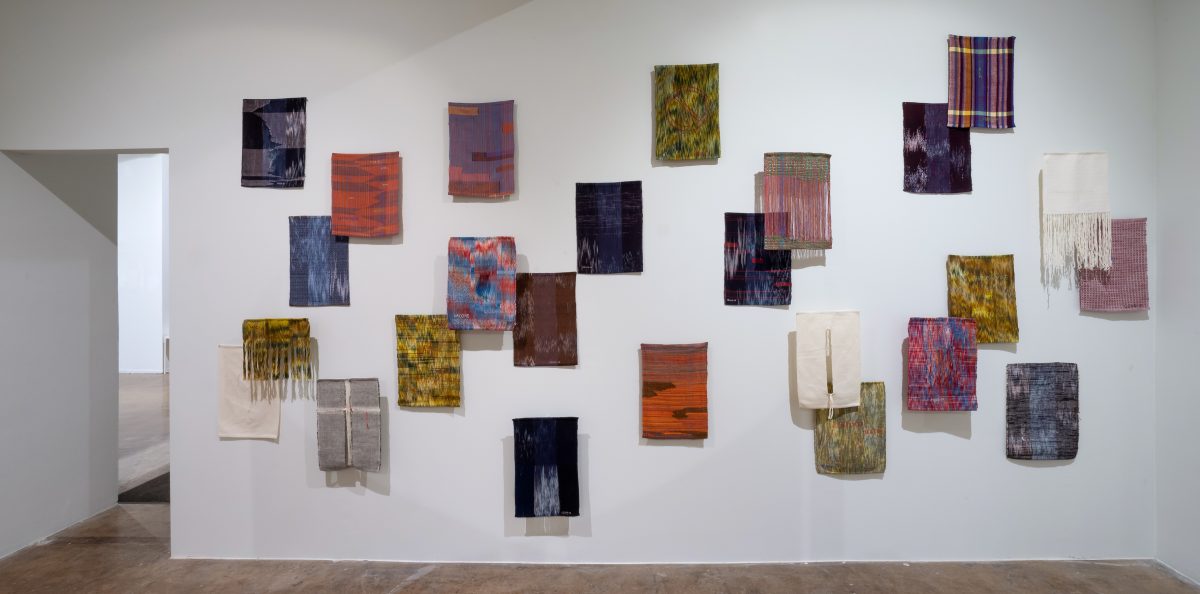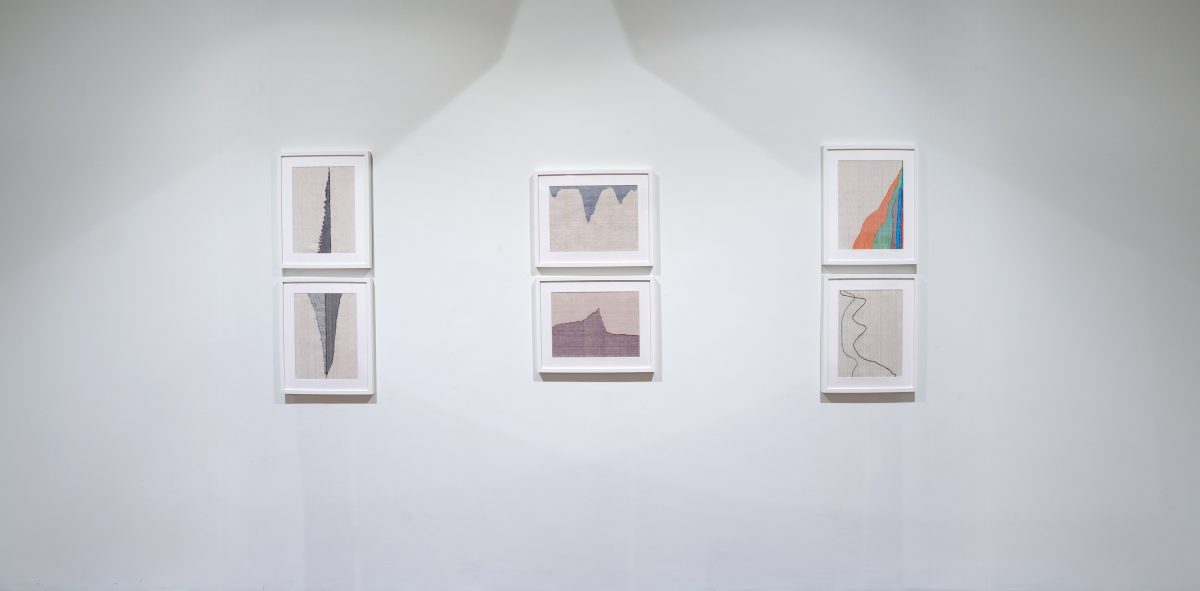
Doerte Weber’s last name means ‘weaver’ in English, and weaving is in her blood. The German-born, San Antonio-based artist comes from a long line of women weavers, although Weber herself is mostly self taught. “I remember very vividly when my father chopped [up] my mother’s loom to [use as] firewood at the end of the ’60s,” she writes in a recent email to Hyperallergic. “It reminded her of the bad times after the war when she had to weave.” Weber, who was just a child when her mother gave up her loom, learned to knit, crochet, and needlepoint early on, but not to weave. Nonetheless, seeing her mother’s loom destroyed planted a seed.
It was only after immigrating to Texas in 1986 that Weber took weaving classes at a local art school. She began her serious pursuit of textiles after visiting an exhibition on the Bauhaus in Berlin, where Anni Albers’s work particularly spoke to her. Shed, Weber’s solo exhibition at Blue Star Contemporary in San Antonio, displays a new series of woven hand towels created during the long months of the pandemic. Like Albers’s, Weber’s works are understated but innovative, modest but moving. Her textiles in Shed inventively push her designs’ formal possibilities as they convey the tumultuous feelings and concerns of the past year.

Weber was drawn to making hand towels because of the pandemic’s heightened emphasis on cleanliness and hand washing. But hand towels also have a more intimate and personal resonance for the artist. In the region of northern Germany where Weber grew up on a small farm, these types of towels were woven by generations of women as part of their dowries. Having inherited and used handwoven towels from her grandmothers, mother, and other female relatives for many years, Weber decided to turn this small daily object into her vehicle for expression and exploration during the long months of confinement.
All of Weber’s towels were created with the same setup on the loom and measure 18 by 13 inches. Her first towels were woven in white cotton and linen with traditional patterns, but soon took on new directions. Despite the slow pace of the medium, some towels record current events. “In the News” (2020) is made from cotton thread handwoven with slim strips from the New York Times newspaper, while “World Covid Cases” (2021) is one of several textiles that reproduces the ubiquitous charts and graphs related to infection rates, hospitalizations, deaths, unemployment, and other effects of the virus.

In other works, Weber embroiders text. A pair of works from “Diary” (2021), a suite of 25 unframed textiles, features hand-dyed black and dark blue threads in strong, vertical lines that are inscribed with the letters “BLM” in pale yellow. Another towel from “Diary” is divided into jagged red and gray fragments that are sewn with the names of the passing months. The towels from this group are the most exploratory and experimental, featuring frayed edges, open spaces, and mismatched colors. These intentional oddities convey the fear, uncertainty, loneliness, and other scattered emotions that many experienced during this period.
Despite the hardship, this project highlights the ways that the pandemic changed our sense of time, progress, and work. Weaving is a slow, repetitive, and thoughtful process, and Weber says that “The greatest advantage I had last year was confinement and time.” Her work in Shed recalls Albers’s words from 1982: “Material is a means of communication. Listening to it, not dominating it makes us truly active, that is: to be active, be passive.”



Doerte Weber: Shed continues at Blue Star Contemporary (116 Blue Star, San Antonio, Texas) through September 5.
0 Commentaires